Integration with OpenWISP Monitoring
OpenWISP RADIUS includes an optional Django sub-app that adds integration with OpenWISP Monitoring to provide RADIUS metrics.
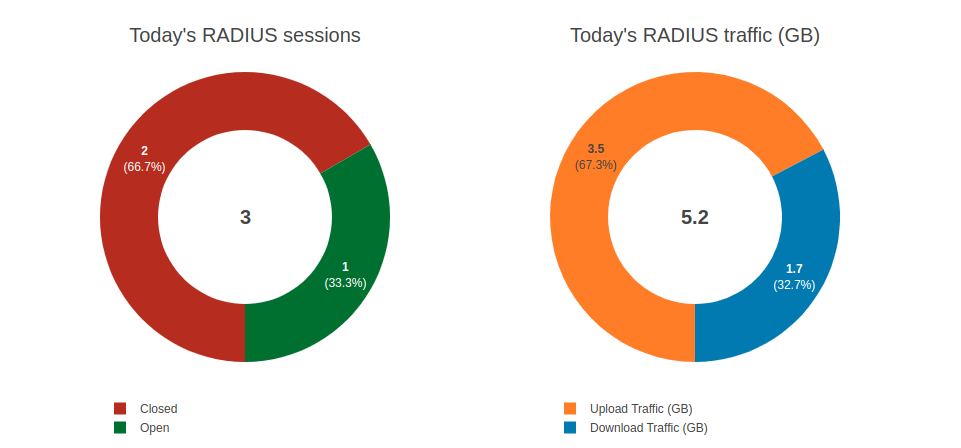
RADIUS metrics
1. User registrations
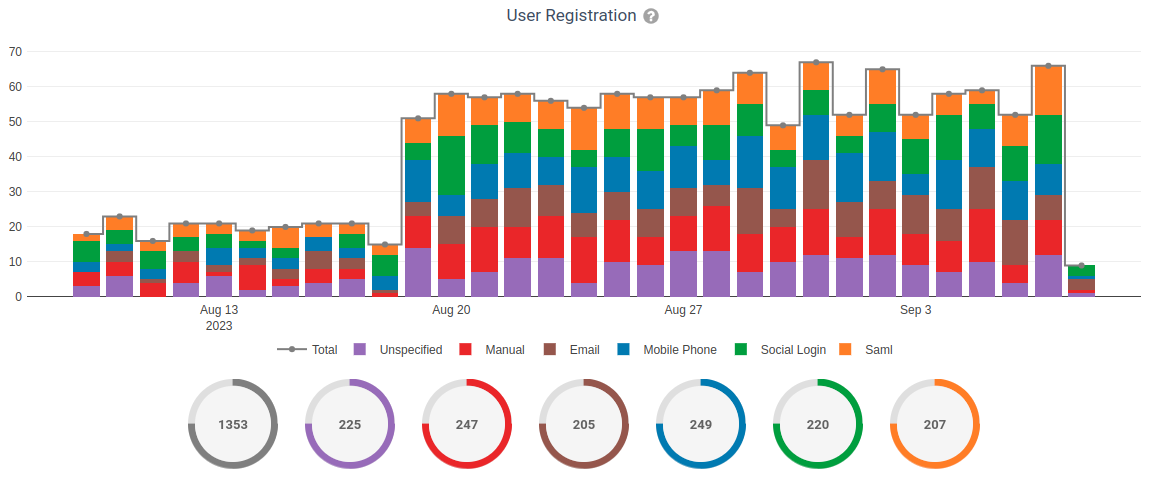
This chart shows number of users signed up using different registration methods.
2. Total user registrations
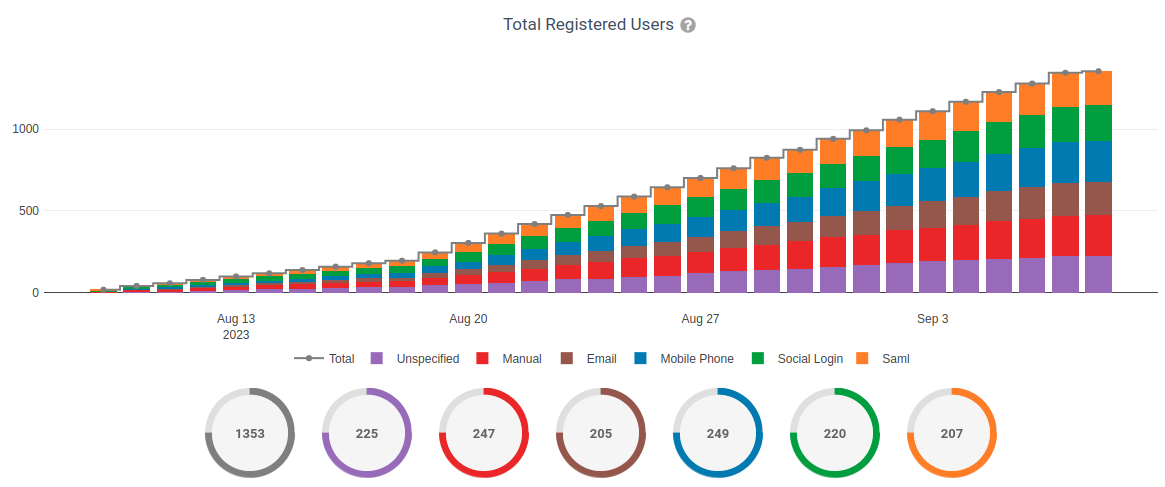
This chart shows total users registered using different registration methods in the system on a given date.
3. Unique RADIUS Sessions
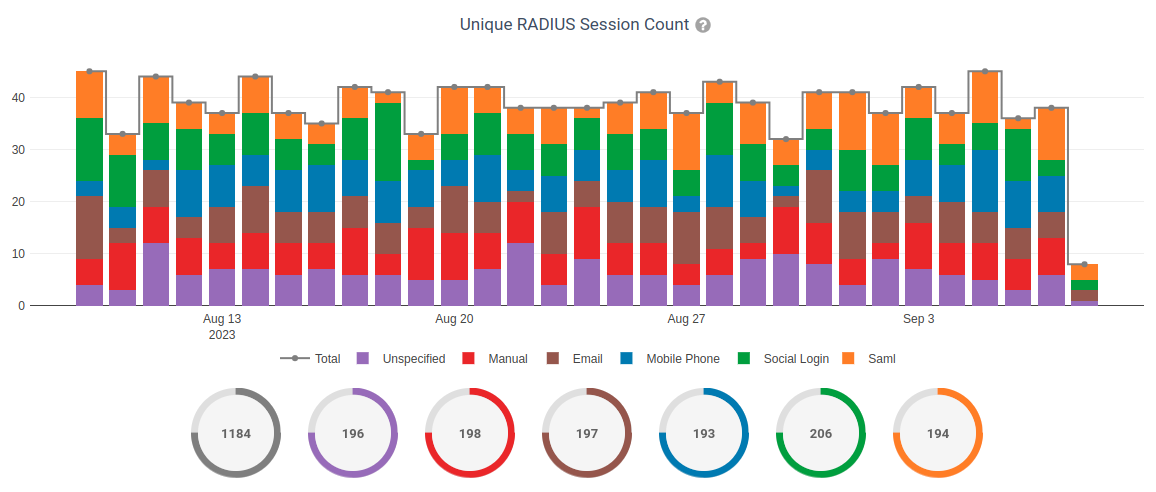
This chart shows unique RADIUS sessions. It is helpful to know how many unique users has used the system in a given time.
4. RADIUS traffic
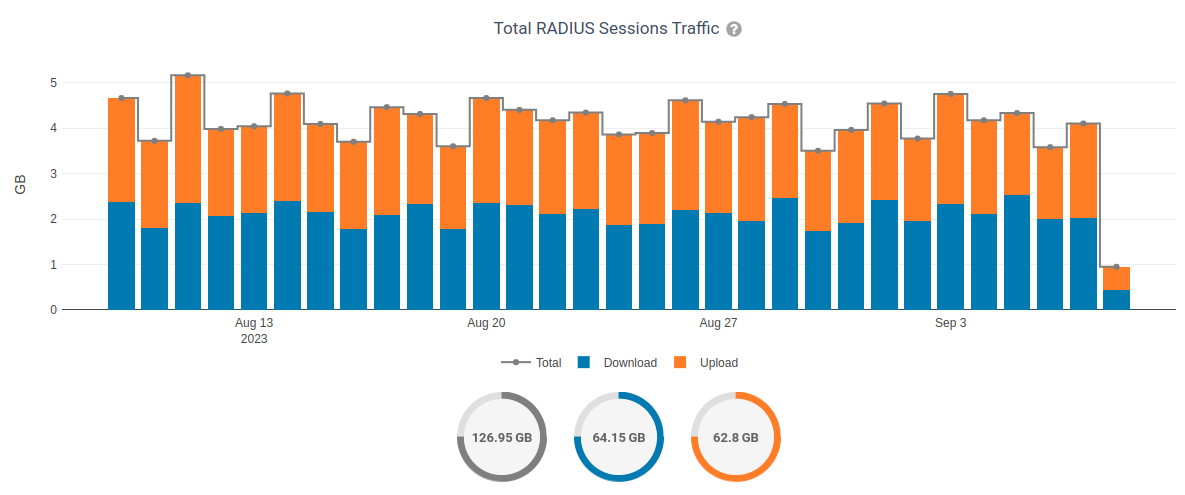
This chart shows the RADIUS traffic generated by user sessions.
Enabling RADIUS metrics in Django project
Note
If you're unsure about what "Django settings" are, you can refer to How to Edit Django Settings in OpenWISP for guidance.
You can enable the monitoring integration by including
openwisp_radius.integrations.monitoring in INSTALLED_APPS of your
Django project's settings as following:
# In your_project/settings.py
INSTALLED_APPS.append("openwisp_radius.integrations.monitoring")
CELERY_BEAT_SCHEDULE.update(
{
"write_user_registration_metrics": {
"task": "openwisp_radius.integrations.monitoring.tasks.write_user_registration_metrics",
"schedule": timedelta(hours=1),
"args": None,
"relative": True,
}
}
)
Note
Ensure your Django project is correctly configured to utilize OpenWISP Monitoring. For production environments, it is advisable to deploy OpenWISP using Ansible OpenWISP or Docker OpenWISP, as they simplify the deployment process considerably.
Important
If you are registering a "registration method" in any other Django
application, then openwisp_radius.integrations.monitoring should
come after that app in the INSTALLED_APPS. Otherwise, the
registration method would not appear in the chart.